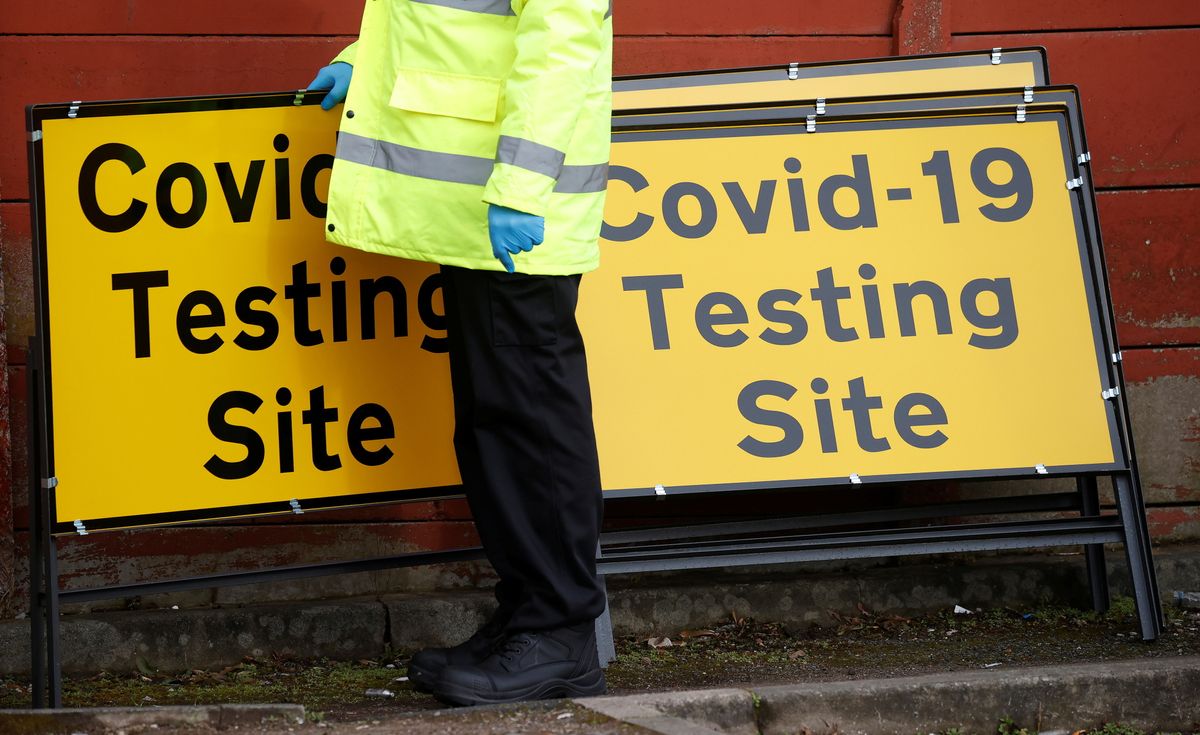What can be expected for the future of the COVID-19 pandemic?

A few minutes every morning is all you need.
Stay up to date on the world's Headlines and Human Stories. It's fun, it's factual, it's fluff-free.
According to a study published in the journal Science, vaccines are likely to become a permanent – though certainly less prominent – presence in our lives.
The latest coronavirus data yields more than a little optimism, but what can we really expect for the foreseeable future with COVID-19?
Dr. Travis Wilkes, Medical Director for EmpowerDX, a COVID-19 test approved by the Food and Drug Administration, tells TMS, “We have to be very careful forecasting since there can be many curveballs we don’t see coming, such as the recent issues with SARS-CoV-2 variants.”
Still, experts believe there is reason for optimism. On February 15, the World Health Organization (WHO) formally authorized the use of the AstraZeneca-Oxford vaccine, a more affordable and easily-stored alternative to the Pfizer/BioNTech vaccine. Researchers believe that this will open doors for countries throughout the world that might not otherwise have access to a vaccine.
On an equally exciting note, the latest data from Israel shows a 94% drop in symptomatic COVID-19 infections among 600,000 people who received two doses of Pfizer’s vaccine, concurrent with the company’s projections.
The study is believed to be the first of its kind to show such a high level of efficacy for those ages seventy and older.
Yet, while some experts suggest that a vaccine might put an end to the pandemic, others maintain that the virus is here to stay. According to a study published in the journal Science, vaccines are unlikely to completely eradicate the virus. The study suggests that it will become a permanent – though certainly less prominent – presence in our lives.
In any case, it proposes that once most adults are immune, the virus will be no more of a threat than the common flu. It goes on to suggest that vaccines could shorten the timeline of this to a year, or even a mere six months.
But as with any good news, researchers remind us to stay vigilant.
A June paper from the Massachusetts Institute of Technology (MIT) proposes that, in fact, global infections were 12 times higher and deaths 50% higher than officially reported. If this is the case, we may have a long way to go before we are out of the woods. Researchers estimate that 55-80% of a population must be immune to the virus to put an end to the pandemic.
What’s worse, many analysts point to newer and potentially more dangerous strains of the virus that have emerged over the past few months.
“I think the current vaccines have been shown to be quite robust but that doesn’t mean a new variant couldn’t evade the vaccine immune response,” Wilkes says.
“Fortunately with the current vaccine technology, it should be relatively easy to develop a booster that would cover additional variants if needed. I think most concerning is not the variants that we know of but the ones that could potentially develop at any moment.”
What do experts know about these strains?
Virus strains
Researchers first detected the existence of a new strain of COVID-19 in October but were not alarmed until two months later, when they found that it could be 50-70% more transmissible than other SARS-CoV-2 variants circulating.
Since then, experts have observed a change in at least twenty-three letters of the genetic viral code, of which seventeen can effectively alter the virus’ behavior. Several of these modify the key “spike protein” that allows it to enter human cells.
Fortunately, as of now, scientists believe that the vaccines we have are still effective against all existing strains of COVID-19. But while researchers have learned a lot about the virus over the past year, there is still a great deal of uncertainty.
What can we expect for the future?
An article published in the English medical journal The Lancet by members of the Interim COVID-19 Working Group of The International Science Council (ISC) suggests that “what emerges next will partly depend on the ongoing evolution of SARS-CoV-2, on the behaviour of citizens, on governments’ decisions about how to respond to the pandemic, on progress in vaccine development and treatments and also in a broader range of disciplines in the sciences and humanities that focus both on bringing this pandemic to an end and learning how to reduce the impacts of future zoonoses, and on the extent to which the international community can stand together in its efforts to control COVID-19.”
There are a multitude of possible consequences. In one case, says the ISC, the COVID-19 vaccines are effective against every future variant and there is a coordinated global effort to extinguish the virus.
“At the other extreme is a pessimistic scenario,” the ISC contends, “in which SARS-CoV-2 variants emerge repeatedly with the ability to escape vaccine immunity, so that only high-income countries can respond by rapidly manufacturing adapted vaccines for multiple rounds of population reimmunisation in pursuit of national control while the rest of the world struggles with repeated waves and vaccines that are not sufficiently effective against newly circulating viral variants.”
In either case, until we have sufficient protection against the virus, the ISC warns that “it could be catastrophic if measures such as mask wearing, physical distancing, and hand hygiene are relaxed prematurely.”
“With such uncertainties, we should not assume that recent scientific progress on COVID-19 diagnostics, vaccines, and treatments will end the pandemic.”
Ultimately, says Wilkes, “we should approach the next year optimistically but cautiously, continue to wear masks and continue with frequent testing.”
And hopefully, days of once again being able to hug loved ones is just on the horizon.
Have a tip or story? Get in touch with our reporters at tips@themilsource.com




Comments ()